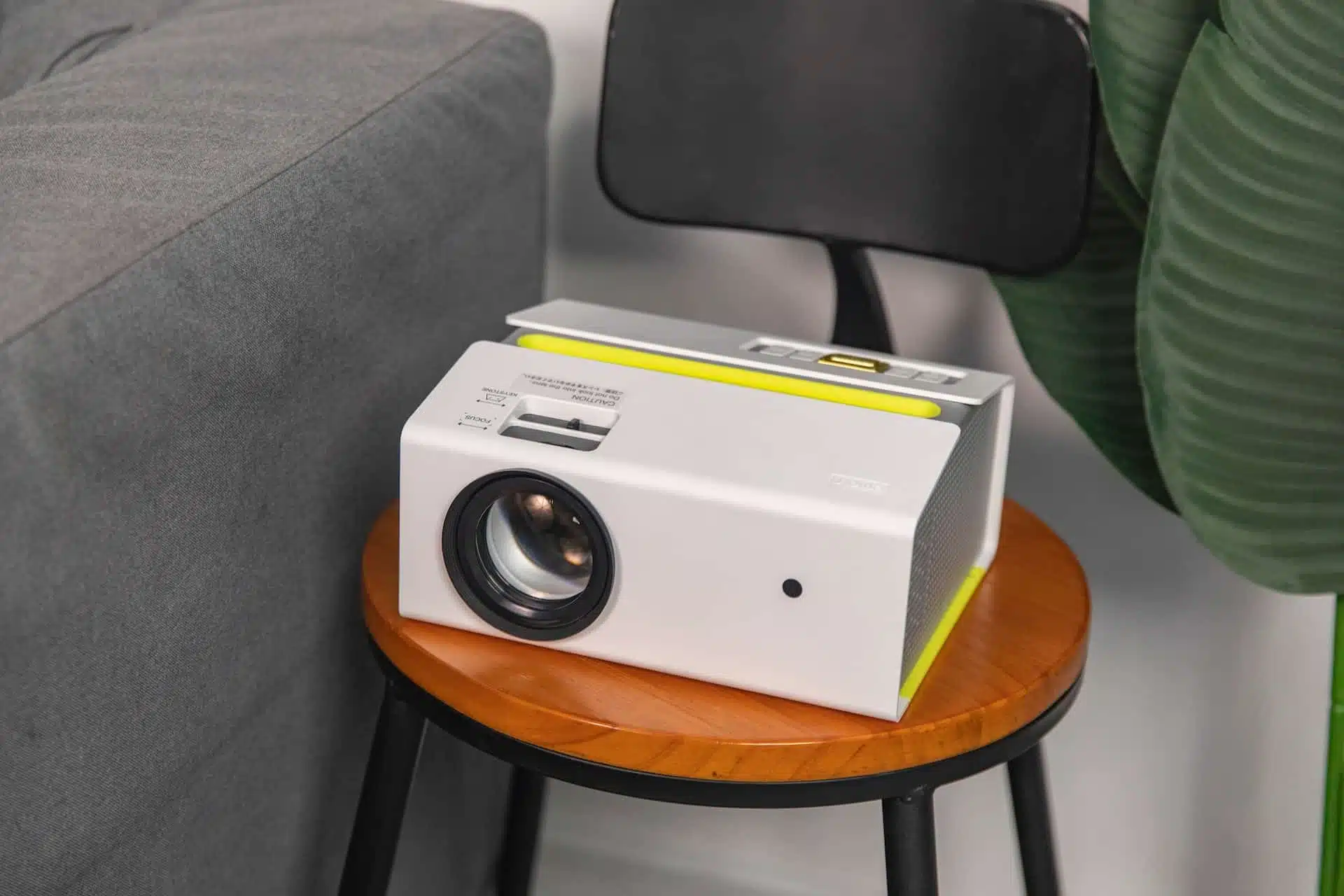Is watching movies on a TV or laptop less appealing these days? Want to have the IMAX experience but are out of cash, broke, and simply don’t want to stress your pockets? Or maybe feeling a little creative and crafty? And you confused about How To Make A Homemade Projector Without A Magnifying Glass?
Well, how about using those crafty and nifty skills to good use and coming up with your own homemade multimedia device which can scratch that yearning for HD movies on a higher resolution, which you are longing for?
But you would be wondering, wait a minute! Is it even possible to come up with innovation in the comfort of your home without breaking the bank and moving a little muscle?
Well fret not, this article is your safe space for all your anxious queries which might seem baffling for you in order to accomplish the task but be assured, I have plenty of experience to share with you so you don’t feel like a rookie.
In order to carry out the deed, you would be needing a couple of things and fortunately, they are quite easy to find, so don’t break a sweat yet.
Things That Would Come In Handy
- A decent-sized cardboard box
- Bulb ( any standard size)
- Any smartphone ( preferably an android, Totally not being a fanboy)
- Sharpie
- Cutting knife
- Water
- Strong forming glue
- Adhesive Tape
- A bottle cap (very important, trust me)
Steps on How To Make A Homemade Projector Without A Magnifying Glass
Pretty sure, that after you’ve finished the list you won’t have any sort of problem gathering all the goods you would be needing. Let’s proceed to the steps on how to make a projector at home without even using a magnifying glass.
Step 1:
First of all, take the bulb and remove its lower covering by applying some force, make sure you don’t pop the glass in your hand.

Step 2:
Now carefully place the bulb on the side of a cardboard box with the sharpie or pencil and outline the circular region as a place marker so you can cut the circular shape out.

Step 3:
Use the cutting knife or a blade to carefully trim and cut the marked area, be very careful, otherwise, you might injure yourself.

Step 4:
Now inside the circular incision place the bulb carefully and firmly so you don’t ruin the shape of the card box.

Step 5:
Since it is obvious that you would be moving your homemade projector around all over the place, it is best advised to use adhesive tape and cover all the sides of the bulb to hold it in place.

Step 6:
Clean the bulb with a cotton swab or any clean cloth to remove any debris and pour some water inside it, as it might compromise the projection quality of images.

Step 7:
Since the water won’t stay inside and it might spill, use the bottle cap to hold the water in place and stop it from flowing outside the bulb, otherwise you might make a mess.

Step 8:
Now take your smartphone and place it inside your card box in front of the bulb.
Although it is obvious it won’t stay upright magically, you need to use some sort of support in order for your smartphone to sit without falling.

Step 9:
Tape your smartphone so that it won’t move or wobble around.
Make sure to cover any holes or cutouts that might compromise the light projections of your homemade multimedia projector.

If you still have issues you can watch the video below, it might help you with your remaining issues.
What can I use instead of a magnifying glass?
The logic behind a magnifying glass is to project light rays by boosting it onto a surface, a lightbulb filled with water can also do the job perfectly fine, however, don’t expect it to produce rich colors with high-definition quality images equivalent to a studio projector.
However, water also has the property of inversing the light rays, which might invert your image projection produced from your smartphone.
The solution to the problem is simple and all you have to do is invert your phone display and place it carefully in front of the bulb.
It will then display the correct orientation to the eyes of the viewers, and voila.
Which lens is used in a homemade projector?

Hey now, nobody is stopping you from using a traditional convex lens which is perfect for displaying images by collecting light rays in its focal point and you can totally use a magnifying glass to do the job since it also has a convex lens.
All you have to do is remove the holder, and use the lens as your main light projection lens. Personally, this method is much easier and less messy than using a water-filled bulb.
Because there is always a chance of water getting spilled and ruining your multimedia projector as well as damaging your smartphone.
However, if that isn’t the case and you don’t have a magnifying glass at your disposal, follow the article above and sort yourself out.
FAQs
Q: How do I focus the image?
A: By moving the projector closer or further away from the screen or wall, you can focus the image.
Q: How do I know if my projector is bright enough for my needs?
A: The brightness of a projector is typically measured in lumens, and the higher the number, the brighter your projector will be. If you are projecting images in a dim or dark room, you may want to look for a projector with a higher lumen rating. If you are projecting in a well-lit room, you may be able to get away with a less bright projector.
Q: How do I clean my projector lens?
A: You can clean your projector lens with a soft, dry cloth. If you need to remove any stubborn dirt or debris, you can use a slightly dampened cloth. Be sure not to use any harsh cleaners or chemicals, as these can damage your projector.
Q: How do I store my projector when I’m not using it?
A: When not in use, you can store your projector in a cool, dry place. If you have created a shoebox projector, you can simply store it in your closet or under your bed. For other types of projectors, you may want to consider investing in a projector bag or case for added protection against damage or dust.
Q: How do I set up my homemade projector?
A: Setting up your homemade projector will depend on the type of projector you create, but typically involves connecting your device to the projector using the appropriate cables and focusing your image. Some projectors may require additional setup steps, such as downloading or installing special software.
Final Take
Moving forward, yes I do admit that a homemade projector isn’t a fine replacement to be considered for everyday use as a multimedia device, however, when you are low on cash, there is no such thing as setting high standards.
Nonetheless, a homemade projector is still a fully functioning machine that can fulfill the job just fine, all while being super budget-friendly.
I hope you have found this article very enlightening (no pun intended), however, if you still have any queries feel free to hit me up in the comment section below.

